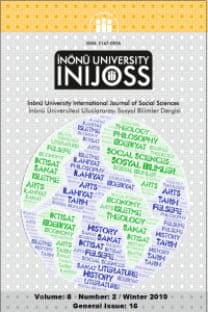BAŞKALARINI KURBAN ETME İHTIYACI VE BUNUN PHILIP ROTH’UN İNSAN LEKESİ İSİMLİ ROMANININ KAHRAMANI ÜZERİNDEKİ TRAJİK ETKİLERİ
Öz
World history is full of different versions of victimization
that actually derive from humans fears.
For instance, as people feared natural
phenomena in ancient times, sacrifices were offered as a way of placating the
forces of nature and purifying the elements that were thought to cause the
outrage of nature/gods. In ancient Greece this was practiced by exiling a goat
loaded with the metaphorical sins of the town. The practice of sacrifice has
embedded itself in human history so deeply that in modern times it survives in
a variety of different forms such as “othering” of women, non-white races, and
political dissidents. American history itself is laden with such victimization-sacrifice
deliria, the most known of which is the Salem witch trials. Though the act of
victimization still stems from fear,
in our modern world, rather than the forces of nature, people fear social and
political forces which threaten to ostracize them if they do not fit.
Therefore, social and political misfits are the new victims to be
sacrificed.
Philip Roth, the most celebrated of Jewish-American fiction
writers, sheds light on the ongoing practice of victimization in contemporary
world and its catastrophic effects on the protagonists’ lives in The Human Stain. This paper aims at
analyzing the reasons and the effects of victimization on the protagonist, Mr.
Coleman, the College Professor having an African-American heritage. Being
brought up witnessing the discrimination against blacks and experiencing its
tragic consequences in his personal life, Coleman decides to “pass” as a Jew in
order to climb up the hierarchal ladder and enjoy the status he is allowed to earn as a Jewish College
Professor. Though his passing functions as a way out of racial inequity for
some time, ironically, Coleman is victimized due to making racial
discrimination to black students in his class.
___
1. Neelakantan, G. (2007). Secrecy and Self-Invention: Philip Roth’s Postmodern Identity in The Human Stain. The International Fiction Review. 34(1): 27-39.
2. O’Neil, B. (2011). A Critique of Politically Correct Language. The Independent Review. 16(2): 279-291.
3. Pinkster, S. (1999). Climbing Over the Ethnic Fence: Reflections on Stanley Crouch and Philip Roth. Virginia Quarterly Review. 78(3): 439-452.
4. Roth, P. (2000). The Human Stain. New York: Houghton Mifflin Company.
5. Sollors, W. (1997). Neither Black Nor White Yet Both: Thematic Explorations of Interracial Literature. New York: Oxford University
